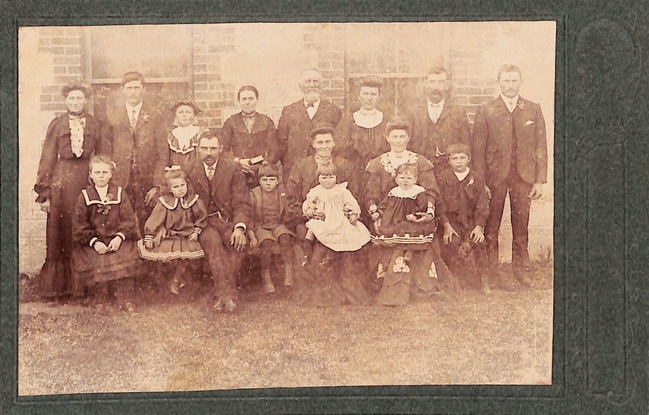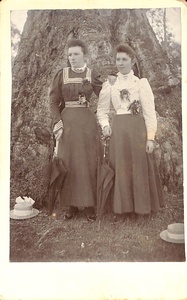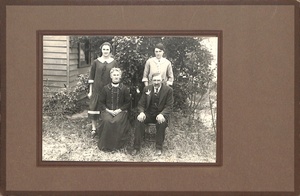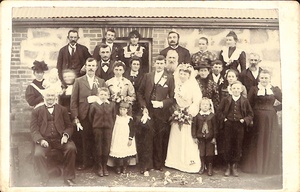This Page forms part of the overall Zebra-ProjectBy clicking on the following Link a list of all Zebra-Project tabbed pages will be displayed. |
Article being copied is a work in progress, created 15 May 2023, further editing required.
John MUELLER Photographic Collection & Other Archival Material
All photographs from the John MUELLER collection except where noted.
THIELE's
Also see the following articles by Tony Finnis, historian administrator & instigator of Adelaide Hills Local Wiki.
- See also 'THIELE, Samuel & descendants' https://localwiki.org/adelaide-hills/Thiele%2C_Samuel_%26_descendants
- https://localwiki.org/adelaide-hills/Thiele%2C_JF_-_Family_History
- https://localwiki.org/adelaide-hills/Thiele%27s_Cottage_-_Hahndorf
- https://localwiki.org/adelaide-hills/Thiele%27s_Shop_and_Residence_-_Hahndorf
A family photograph of Anna Dorothea THIELE b1856 & husband Johann Wilhelm PAECH b1850
Anna is a granddaughter of Samuel THIELE b1781ca & Anna Rosina SCHULZ b1787ca
 Photograph owned & enhanced by Elizabeth BARNES, family historian. Photo taken 2 December 1908, Western Flat homestead.
Photograph owned & enhanced by Elizabeth BARNES, family historian. Photo taken 2 December 1908, Western Flat homestead.
Kavel's People by David Schubert page 155
THIELE Samuel Thiele, 57, small cottager. Wife Anna Rosina nee Schulz, 51. Children Johann Friedrich 26 [b Feb 28, 1812] shoemaker, Johann Wilhelm 19, tailor, Johann August, 5 [b July 6, 1833]. From Harthe, Christian Thiele, above was also a son. Settled at Hahndorf, where Samuel and his sons, Friedrich and Wilhelm each had some land and livestock. Samuel died April 1869, buried St Michael's Hahndorf cemetery. His wife died Jan. 1862. Friedrich [or 'Hanfried'] married Anna Dorothea Schmidt, listed above. Theirs was the first marriage at Hahndorf. He was elder and trustee in St Michael's congregation. Wilhelm's wife was Eleanore Henriette Lubasch who came out on the Zebra with her family. He farmed at Grünthal. August married Luise Thiele. Each of the 3 brothers had a number of children.
Summary
- Samuel THIELE 57, wife Anna Rosina SCHULZ 51 from Harthe, Brandenburg, Prussia, arrived on the
- Christian
- Johann Friedrich [Hanfried] 26, shoemaker, b1812, first marriage in Hahndorf.
- Johann Wilhelm 19 tailor married Eleanore Henriette LUBASCH, farmed Grünthal.
- Johann August 5 [b1833] married Luise THIELE.
https://cdn.environment.sa.gov.au/environment/docs/hahndorf_sa.pdf
|
|
|||
 |
 |
 |
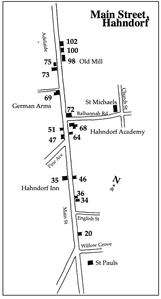 |
Also refer to:
http://thiele.janmaet.com/ provided by John JANMAAT whose wife was a THIELE.
|
|
 |
 |
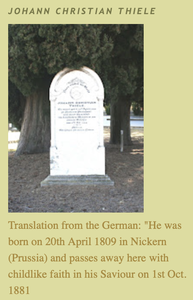 |
Article researched & written by Elizabeth BARNES
Samuel was born around 1781 in Prussia and died 88 years later in a new colony belonging to the British, at Hahndorf, in the Province of South Australia on the 23 Apr 1869. I do not have a lot of information on Samuel pre arrival in South Australia in 1838. What I have is anecdotal, from births, headstones, newspaper reports, Lutheran records and shipping diaries. Samuel was [already] married to Rosina Schulz when they emigrated to South Australia According to Old Lutheran Immigration List (Iwan, 1943) Samuel was resident of a tiny hamlet called Harthe, [now known at Karczyn, Poland] in Kriess (County) Zellichau, Is this Züllichau-Schwiebus?
Brandenburg, where he was a Cottager with 2 sons living with him. Johan Freidrich, [? Friedrich] known as Hanfried, and Johan [nn Johann??] Wilhelm. A third son Johann August was born later in 1833 in Frankfurt am [an] der Oder, [wow great… do you have reference for this?] on the journey that led to them coming to South Australia. A fourth son and the eldest known, Johan Christian had married a widow and moved to Kay, Zellichau, Brandenburg ( Yellow dots) a distance of less than 30 kms. A day’s walk. Liz I have Karczyn Poland to Kije Poland as being about 13-14 kms in a straight line..J. Christian was born in 1809 according to his headstone during the Napoleonic Wars.
Samuel and a neighbour Gottfried Lubasch, of Rissen, [now known as Rosin, Poland] are reputed to have been in Napoleon’s Grand Armee that marched to Moscow in June 1812. It must have been a traumatic time for the Thiele family. Samuel left his wife Rosina with a 3-year-old, Christian and a new infant, Hanfried, born in February of 1812. Napoleon swept through Prussia collecting men, willingly or not and marched them all to Russia. Reportedly 450,000 men went to Russia in June of 1812. [reference?]
Due to the military genius of the Russian commanders, a war of attrition started immediately. Samuel and Gottfried both returned home, one of the lucky few, sometime after the end of December 1813. Only 120000 men made it back to the Prussian border. Rosina and Samuel continued to expand their family. 1819 welcomed Johan Wilhelm [who in 1839c married Gottfried Lubasch’s 2nd daughter by his first wife] and apparently in 1833 their last son Johan August was born. [I feel that this was perhaps a son of another son we do not know. I wonder how many daughters are not mentioned. Rumour has it there is bible that listed all Rosina’s children, but I don’t know who has it.]
Liz do you know where J Gottlob THIELE b 1811 d1899, m J Christian HEMMERLING b1816 d 1890 fit in???? Reported from the Lutheran archives is a passage about Samuel Thiele and Johann George Kuchel
“The Lutheran pioneers, as stated, had fought for religious liberty and freedom of conscience, refusing to allow the king to force upon them his own religious beliefs and opinions, however honestly held by him. The result was oppression and persecution. And incredibly severe were the measures taken against them to enforce submission to the will of the king. [Reference]
n the district of Zullichau, in Silesia, [It probably does say ‘in Silesia’ but I am sure it is actually in Brandenburg] two families (Thiele and Kuchel) were each fined 50 marks for non-compliance with the order of the authorities, because they had declined to allow their children to be instructed in doctrines that were antagonistic to their own religious convictions. They were either not in a position to pay the fine, or they refused to pay from motives of conscience. The consequence was, the seizure and sale of Kuchel's household effects and even wearing apparel. As the proceeds of the sale did not cover the amount of the fine, another seizure and sale took place somewhat later.
[I reckon we could identify this KUCHEL who of course are relatives of ours].
Thiele's fate was even more tragic. Not only were his furniture and other effects and chattels seized, but even his homestead was confiscated and sold, in the face of desperate attempts to prevent the infliction of such a crying injustice. [Liz I am only separating the paragraphs to read it easier; it does not indicate that it should look like this]
A great-grandfather [who] of the present writer had been elected a deputy by a Lutheran congregation to proceed to Berlin, and appeal in person to the king. As soon as the object of his journey to Berlin became known, the order was given to quit Berlin ''sofort" (at once). After his return to his home, he was arrested and sentenced to a short term of imprisonment for "disaffection and disobedience,"' in reality because, in child-like simplicity, he had imagined that a personal appeal to his "gracious king and land-father" would move the royal heart to do justice to the Lutherans and end their troubles and trials.” (Our Lutheran Settlers, 1928)
By 1833 the family, more than likely destitute had moved to Frankfurt am [I think this is ‘an der’] der Oder, into a what we would now call a refugee camp. They along with other families began petitioning the King for religious freedom or permission to leave. By 1836, Kaiser Wilhelm had had enough and granted them freedom to leave and permission to renounce citizenship. I expect a great deal of sadness and relief was felt by these Old Lutherans. However, that permission was soon renounced. The Old Lutherans who eventually made their way to Australia, travelled from [Tschicherzig, Brandenburg, now known as Cigacice, Poland NOT from Frankfurt an der Oder] ] Frankfurt down the Oder River on River Barges, through Berlin where they serenaded Kaiser Wilhelm and onto Hamburg via the canals. They stayed on the barges for months in 1838, waiting for a second permission which eventually happened. Captain Dirk Hahn wrote in his memoirs about the abject poverty they lived in, but of the spirit they had.
Come July 1838 the company final[ly] leaves Altona harbour. Samuel and family where on either the Zebra or the Prince George. [Only the Zebra left from Altona] which is right next to Hamburg. David Schubert says they were on the ‘Zebra’.
No shipping list exist[s] of who came on the original 2 ships, that made Port Misery in December of the same year. According to the log of Captain Hahn, he had 200 on board, of which […] died, mostly of typhus and dysentery. Off the Cape of Good Hope a storm was encountered which shredded the sails. Running repairs were carried out for 72 hours straight. Most of the passengers, except the old men apparently, suffered from sea sickness. Can you imagine the stench arising under the deck? Four months at sea, and they arrive at Port Misery, forced to wait until Jan 4 [The Zebra] to disembark due to low water. The men piggybacked the women and children ashore, then went back for their worldly goods. In handcarts the new arrivals trudge towards Adelaide, a shack town on the banks of the Torrens River. Captain Hahn felt an obligation to assist the new settlers settle in, and stayed ashore to negotiate land for the Germans at Klemzig and finally at Hahndorf. Named for Captain Hahn in appreciation.
Their neighbours in Harthe Johan Friedrich Hoffmann died on the voyage out on 30 October. His wife Maria and daughter Luise, along with friends would have held a sea burial. Their two children who were forced to remain behind, would only get the news many months later. At the beginning of January 1839, many German families where trekking into the Adelaide Hills, pushing handcarts with limited supplies, all the way to what would become Hahndorf.
The first thing they needed to do was clear kangaroo grass and trees. Samuel and his family would have survived on Kangaroo and other native animals in stews and soups for many months. Any spare time was spent getting garden beds ready for planting or attending church.
Samuel and his two eldest sons received blocks of land on Main Street. Wilhelm did not, perhaps considered too young? Later that year all the Thiele men bar August, only 6, made the oath of allegiance at Klemzig. Rosina and Samuel must have been quite industrious because in 1841, just 2 years after arriving, and with a lot of debt, for the ship travel and purchasing the block of land, Samuel was robbed by Joseph Glass of
one pound. Mr Glass was caught and committed in May 1841. By 1844 Samuel and Rosina had cleared at least 4 acres of land, officially had 3 acres under wheat and half an acre of potatoes. They also owned 9 cattle, 2 ponies, 1 pig and 10 goats. (Allen, 1844)The home on Main Street would have expanded to include stables and pens for all the animals and Rosina would have had a cold room/cellar to store the milk from the cows and goats in. Undoubtably she would have made cheese all year round. The animal waste would have been used on the vegetable gardens as compost. There is no mention of chickens but I cant see that there would not have been a reasonable hen house.
Recognition by the British finally occurred in 1847 when Samuel was entered on the List of Colonists in South Australia.
The Thiele family continued to expand, Christian and his wife now had added another 3 surviving children to his wife’s other children, by Zeinert. Their second son Johan Gottlieb had died in 1845, age 2. Hanfried had married Anna Dorothea Schmidt of Schoenborn, and they now had 4 children, with more to come. Johan Wilhelm married Johanne Henriette Lubasch, daughter of his fellow Moscow campaign under Napoleon. They had 5 children with more to come. Lastly Johan August was still living with them, unmarried, only 14 years old.
Of Samuel and Rosina’s neighbours in Harthe, Johan Friedrich Hoffmann who died on the journey, leaving Maria Hoffmann who travelled with them a widow, she received a block of land on Victoria Street. Victoria Street was behind Samuel’s block, so the association continued. Her daughter Luise married Christian Pfeiffer in 1840. The Schulz family also suffered much hardship. The family sea buried daughter Ann Elisabeth on the voyage, mother Dorothea died shortly after arriving in South Australia, and Gottfried remarried Dorothea Loeffler, probably in Klemzig. He did not receive an original grant in Hahndorf.
In 1851 Samuel was eligible to vote. As an upstanding member of the community one can only assume he did. In 1853 Samuel passed the title of 100 Main Street to his youngest son, Johan August. Samuel is now 72 years old, and Rosina 65. They must have ben looking to slow down. August is now 20, and maybe he bought his father out, as he became the name on the title. A new home that had been built on Block 91, in 1855 and his son Hanfried were threatened by fire……
South Australian Register (Adelaide, SA : 1839 - 1900), Saturday 27 January 1855, page 3
Fire at Hahndorf.— On Wednesday after-noon about 4 o'clock, a fire broke out at Hahndorf, and it was shortly seen that the premises of Mr August Thiele, a farmer, whose house, adjoining the mill recently erected by Mr. Witwer, was in flames. The fire soon caught the old mill and burned it to the ground, together with Mr. Witwer's residence. Shortly afterwards the wood in the yard caught fire (a very considerable quantity), and nearly the whole was consumed. The flames at length reached the new mill, and a portion of the shingles and wood-work was destroyed, but the structure generally was saved, and the engine has scarcely ceased working. Mr. Thieles’s residence, a good stone house, was entirely destroyed. The entire damage done by the fire has been estimated at about £500.
A second report infers that Samuel is the owner THIELE Samuel Thiele's house threatened by fire South Australian Register Monday 29 January 1855, page 2-www.trove.gov.au
In 1856 Samuel’s youngest son married and brings a bride back into the home. She is Johanna Louise Thiele, daughter of Gottlob Thiele and Christina Hemmerling. Not a direct relative of Samuel’s but very possibly related further back, as from the same region of Prussia as Samuel and Rosina. August and Louise proceed to fill the house with children, one every 2 years, until there were 11 of them.
Sadly in 1862 Rosina passes away and is buried at St Micheal’s Church, were she and Samuel had worshipped since 1840. Her headstone was a slab of Redgum, carved or painted with her details.Samuel lives on for a further 7 years, amongst the ever growing brood of August’s family, until he passes away on 23 Apr 1869 age 88 years. A hard, perilous life was no barrier to Samuel Thiele living a long full life.
Time Line
- 1781 birth in Prussia
- Apr 1809 birth of son Johan Christian
- Feb 1812 Birth of son Johan Friedrich (Hanfried)
- 1819 birth of son Johan Wilhelm
- Abt 1830 falls foul of Kaiser Wilhem Friedrich II
- Bef 1833 fine 50 marks for not educating his children in new doctrine. Loses the house and contents, clothing and animals. He leaves Harthe and goes to transit camp in Frankfurt am der Oder, the first leg of the epic journey.
- Jul 1833 Birth of son Johan August at Frankfurt am der Order
- 1836 receives permission to leave, rescinded 6 months later.
- Jan 1838 arrives in Hamburg on Barges to board the George or Zebra under the auspices of Pastor Kavel and Sir George Angas Fife. Spends month confined to ships awaiting final approval to leave
- Jul 1838 Leave Altona harbour for Plymouth, to pick up Pastor Kavel
- Nov 1838 arrive at Port Misery
- Dec 1838 Set up a settlement at Glen Osmond.
- Jan 1839 Negotiate the settlement of Hahndorf, 150 acres at 7 pounds an acre.
- May 1839 Start clearing land at Hahndorf, and commence settling. Samuel buys Lot 17 on Main Street, son Hanfried is next door. Son Christian receives a lot on the Southern end of Main Street. Sons Wilhelm and August receive no land
- 1839 Samuel gives his Oath of Allegiance to South Australia and the British
- 1841 Samuel a victim of crime, he has one pound stolen from him by Joseph Glass
- 1844 Agricultural census has Samuel holding 9 cattle, 2 ponies, 1 pig and 10 goats. He has 3 acres under wheat and half an acre under Potatoes
- 1847 List as a Colonial resident
- 1855 Samuel and Hanfried’s home come under risk of fire. More damage is actually done but neighbours trying to help put fires out. Fire started by millyard engine, as no engineer present. The wood, the old mill house, miller’s residence, a new stable and dray were all destroyed. Samuel and his son’s houses were much injured by the fire, most by neighbours removing the doors and windows.
- 1862 Rosina his wife dies.
- 1869 Buried in St Micheal’s Churchyard. Headstone was a Redgum slab, painted with his and Rosina’s details. The marker had perished by 1925
Residents of Harthe Hoffmann Johan Friedrich, Gardener, aged 61 in 1838. Daughter Maria Elisabeth married to _August_Adam. Her husband refused to migrate. Son Johan Christian, his wife refused to migrate. Both children wanted to migrate and applied for divorces. Refused by Government. Wife Anna Maria Koerber, 54. Daughter Luise, 21
Schulz Gottfried, 50 Journeyman mason. Wife Dorothea Hahn, 40. Daughter Dorothea, 19. Son Johan Gotthilf, 13. Daughter Johanne Eleonore, 11. Daughter Marie Elisabeth, 9. Daughter Anna Elisabeth 1 1/2
The following photographs are from the
John MUELLER Photographic Collection & Other Archival Material
|
|
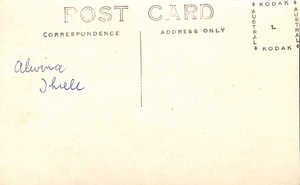 |
|
|
|
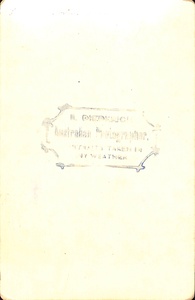 |
|
|
|
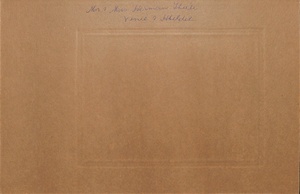 |
|
|
|
 |
|
 |
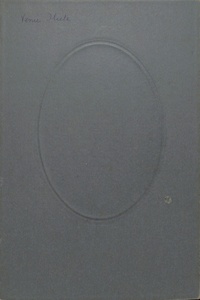 |
|
|
|
 |
|
|
|

